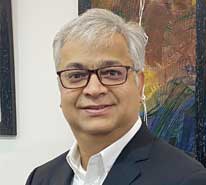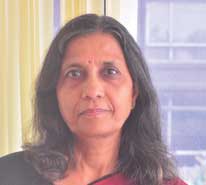The team at Singhania & Partners LLP discuss how courts in India have adapted to online technology over the past year
While it may be true that the pandemic has badly affected all activities across the world, it certainly has paved the way for much needed overhauling in the dispute resolution system in India. Dispute resolution is functioning in some ways much better online and has adapted to technology within a year, which otherwise would have taken a decade.
The Supreme Court of India (SC) had introduced information and communication technology (ICT) enablement of courts in 2013. Courts in India are using e-platforms to conduct hearings, filings and court proceedings through web-based, video conferencing system and VC apps, differing from court to court. Any person can attend a hearing from any part of the world through a weblink available on the respective court’s website, along with the name and number of respective court master. Once joined, as and when the matter is called out, the lawyers/litigants have to unmute their mics and turn on their camera to submit before the court.
Gone are the days of standing in long queues for entry passes into court premises. Now, with the tap of a link, one can attend a matter across the globe in a fraction of a second, multitasking at their own desk. Advocates appear for hearings, submit evidence, and conduct cross examinations online. With one email, the documents such as petitions, replies, affidavits etc get filed in the court and served to all concerned parties. Counsels or arbitrators can be available from anywhere and adjournments on technical grounds are a history. Mobile apps, SMS and emails are extensively used as podiums for filing of matters and dissemination of information.
The following are some precedent setting case-laws:
Grid Corporation of Orissa Ltd v AES Corporation
The Supreme Court mentions that ‘when an effective consultation can be achieved by resort to electronic media and remote conferencing, it is not necessary that the two persons required to act in consultation with each other must necessarily sit together at one place unless it is the requirement of law or of the ruling contract between the parties.’
State of Maharashtra v Dr Praful B. Desai
Herein, the use of video conferencing to record witness statements and online submission of documents was legally acknowledged in Indian courts.
Shakti Bhog v Kola Shipping
An online arbitration agreement is valid and admissible, when the agreement is accessible electronically and has digital signatures of the parties involved.
Trimex International v Vedanta Aluminium Ltd
The aforementioned decision was sustained further in this case to integrate technology and logically transition towards ODR.
M/s Meters and Instruments Pvt Ltd & anr v Kanchan Mehta
In India, the use of modern technology was held imperative, not only for paperless courts, but also to reduce overcrowding of courts and hearing cases online without physical presence of the parties or their legal representatives.
A Standard Operating Procedure (SOP) has been laid down by the Supreme Court for uniformity in conducting virtual proceedings. The courts are authorised to adopt measures required to ensure the robust functioning of the courts using video conferencing technologies consistent with the peculiarities of the states. For instance:
- The High Court of Delhi laid down guidelines, ensuring that one has a stable internet connection and a laptop/desktop to attend the same hearing.
- Courts have resorted to virtual courtrooms.
- Physical hearings are not necessary for meeting the constitutional stipulation of open courts.
- A hybrid of the opt-in and opt-out model is being followed in India. Courts are offering opt-in model, where counsels have voluntary decision of pre-litigation, litigation through physical appearance or virtual hearing through VCs. There are instances where one party may appear through virtual mode wherein, the other appearing physically on their discretion.
- Matters of urgency in lockdown are taken up and disposed swiftly by the judges to avoid pendency.
- Live streaming of court cases and use of artificial intelligence in judicial framework is allowed.
- Certified copies of documents are submitted online along with e-payment gateways provided for making deposits, payment of court fees, fines etc.
Key benefits:
- Cost effective
- Transparency
- Saves travelling time
- Facilitates asynchronous communication
- Increased access to justice
- Less carbon footprint
- Faster cross-border dispute resolution
- Boosts connectivity
- Reduce multiple jurisdictions
- Easy excess to public
- Quick dispute resolution removing unconscious bias
Challenges and setback:
- Tech-savvy issues
- Connectivity issues
- Lack of awareness
- Reluctance to adapt to new methods
- Infrastructure
- Confidentiality of proceedings
- Tutoring of witnesses
- Professional misconduct by lawyers
- Court room decorum
- Lacks personal touch
- Problems in referring to digitalised documents
Contemporary developments
National Judicial Data Grid (NJDG) is further working to use analytics tools to facilitate more qualitative information for courts, government and public.
A mediation and conciliation projects committee represented by Hon’ble Justice A K Sikri of the Supreme Court of India along with his panel of expert lawyers and some expert foreign mediators based in Singapore and US is also constituted to encourage such practices. Similarly, an e-committee of the Supreme Court of India headed by Hon’ble Justice DY Chandrachud suggested the adoption of live-streaming and transcription of court proceedings in its e-courts projects.
Further, in lieu of resolving problems arising out of transactions over e-commerce companies, online mediation is being preferred. Keeping this in view, industries are opting voluntarily for implementing innovative online dispute resolution mechanisms to institutionalise dispute resolution processes. For example, ICICI Bank has institutionalised ODR in India.
Future
No system is flawless, and this system too can suffer threats such as breach of security or confidentiality, connectivity, infrastructure and apparatus for smooth functioning. For example, in court hearings, in a case where any party is being summoned, it can choose to remain absent from the court, while still being privy to the proceedings. Or, in cases of arbitrations and mediations where confidentiality is paramount, by a simple click of the link, any third party can have access to the hearings and negotiations between two parties. The few challenges presently being faced in online hearings should be addressed in times to come and hopefully we will all see a very effective, efficient, expeditious and most desirable dispute resolution framework in place.

Ravi Singhania
Managing partner
Tel: +91 11 4747 1411
E: ravi@singhania.in

Shilpa Shah
Senior partner
Tel: +91 80 4113 1900
E: shilpa@singhania.in

Vikas Goel
Partner
Tel: +91 11 4747 1470
E: vikas@singhania.in

Shambhu Sharan
Partner
Tel: +91 11 4747 1480
E: shambhu@singhania.in
Return to the Disputes Yearbook 2021 menu











